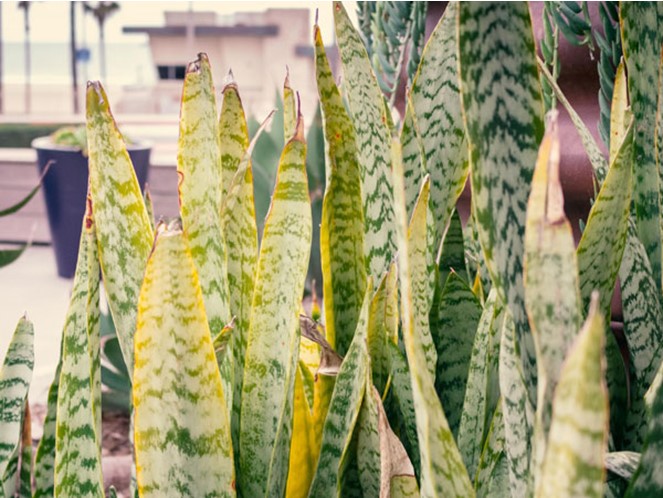Ornamental Chard for Landscaping Enhances Garden Color and Texture
Ornamental chard is a colorful, versatile plant that brings vibrant leaves and low-maintenance flair to landscaping. It’s honestly a fun way to add texture and color contrast in garden beds and borders.
Its striking foliage makes it a go-to for adding visual interest all season long.
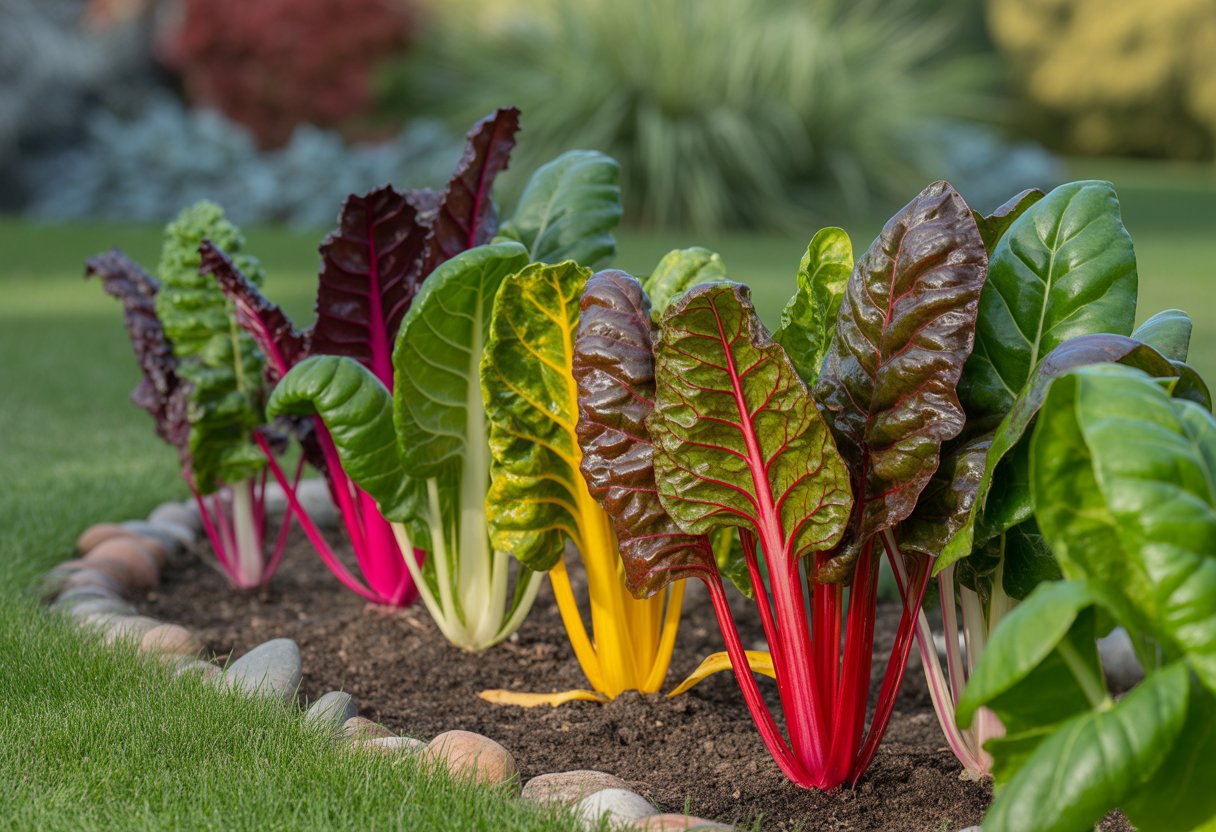
This plant thrives in a bunch of climates and adapts to different soil types, so it’s at home in many landscapes. Gardeners love how it combines beauty and resilience in outdoor spaces.
Beyond its looks, ornamental chard fits well in mixed plantings where durability and color retention matter. It adds that pop without demanding too much attention.
What Is Ornamental Chard?
Ornamental chard is a decorative plant prized for its vibrant colors and dramatic leaf shapes. It’s in the same species as Swiss chard, but folks mostly grow it for its looks.
You’ll find all sorts of hues and forms—perfect for jazzing up landscaping designs.
Botanical Background
Ornamental chard comes from Beta vulgaris, which also includes edible chard, beets, and rhubarb. Breeders focused on foliage, not roots, which is why the leaves are so eye-catching.
Its leaves grow large and crinkly, with thick, colorful stems that really stand out.
The plant originally hails from the Mediterranean and does best in temperate climates. Depending on where you live, it acts as a biennial or annual.
You’ll see it popping up in garden beds or containers, adding texture and color wherever it goes.
Ornamental vs. Edible Chard
Ornamental and edible Swiss chard are close relatives, but their roles in the garden are pretty different. Edible chard gives you tender, nutrient-rich greens, usually in shades of green.
Ornamental types, though, are all about bold stem and leaf colors.
You can technically eat the ornamental varieties, but the leaves might be tougher or not as tasty. Most gardeners just want the color anyway.
Unique Colors and Varieties
Ornamental chard brings a wild palette—burgundy, magenta, ruby red, and those “Bright Lights” shades. Some favorites? ‘Bull’s Blood’ shows off deep red stems and dark leaves, while ‘Magenta Sunset’ has pink stems and variegated foliage.
You’ll spot everything from deep reds and purples to yellows and oranges, sometimes all on one plant. That’s what makes them so appealing for landscape designs that need a punch of color.
Designing with Ornamental Chard in Landscapes
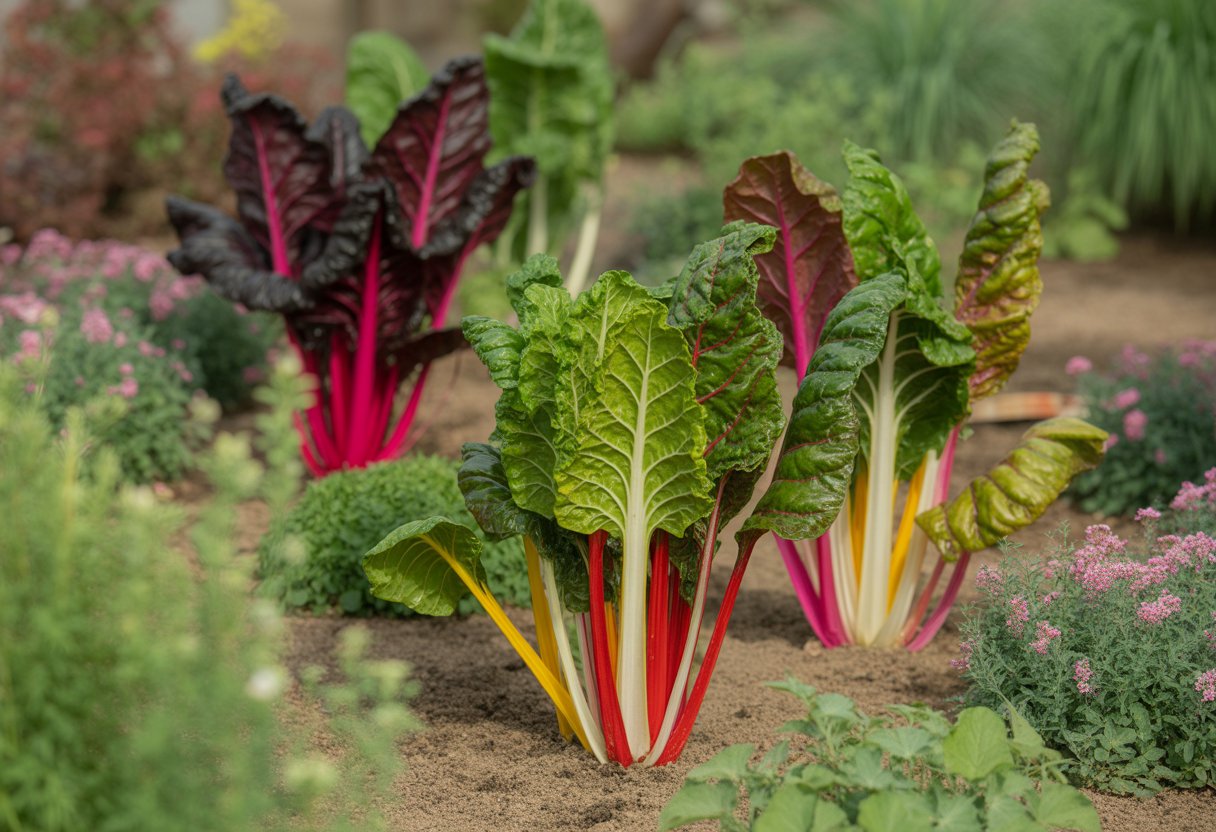
Ornamental chard brings vibrant color and texture to all sorts of garden settings. It pairs easily with other plants and fits right into flower beds and raised beds.
Using Chard in Flower Beds and Borders
Ornamental chard pops in flower beds thanks to its bold, colorful foliage. Set it behind low-growing flowers like pansies or dianthus for a layered look.
Its tall, flashy leaves make a natural backdrop and help the blooms in front stand out.
Mulch around chard to lock in soil moisture and keep weeds down. That’s key for healthy growth.
By mixing chard into flower beds, you get contrast without overshadowing delicate annuals or spring bulbs like tulips.
Companion Plants for Ornamental Chard
Chard gets along with plants that like the same light and moisture. Heather and similar shrubs offer a nice texture contrast.
Annual flowers—think pansies and dianthus—fill in gaps and bring more seasonal color next to chard’s steady foliage.
Keep it away from tall shrubs that might shade it too much. Good air flow helps keep chard healthy and free from disease.
Companion planting here can make the garden more interesting and cut down on maintenance.
Chard for Sidewalks and Raised Beds
Planting ornamental chard along sidewalks gives you a colorful, low-upkeep border. In raised beds, it thrives with well-drained soil and better control over nutrients.
Raised beds also make it easy to pair chard with early tulips or heather for a seasonal mix.
For sidewalk plantings, use sturdy mulch to protect soil and roots from foot traffic. Chard’s broad leaves soften those hard edges and keep walkways interesting, even in the off-season.
Planting and Cultivating Ornamental Chard
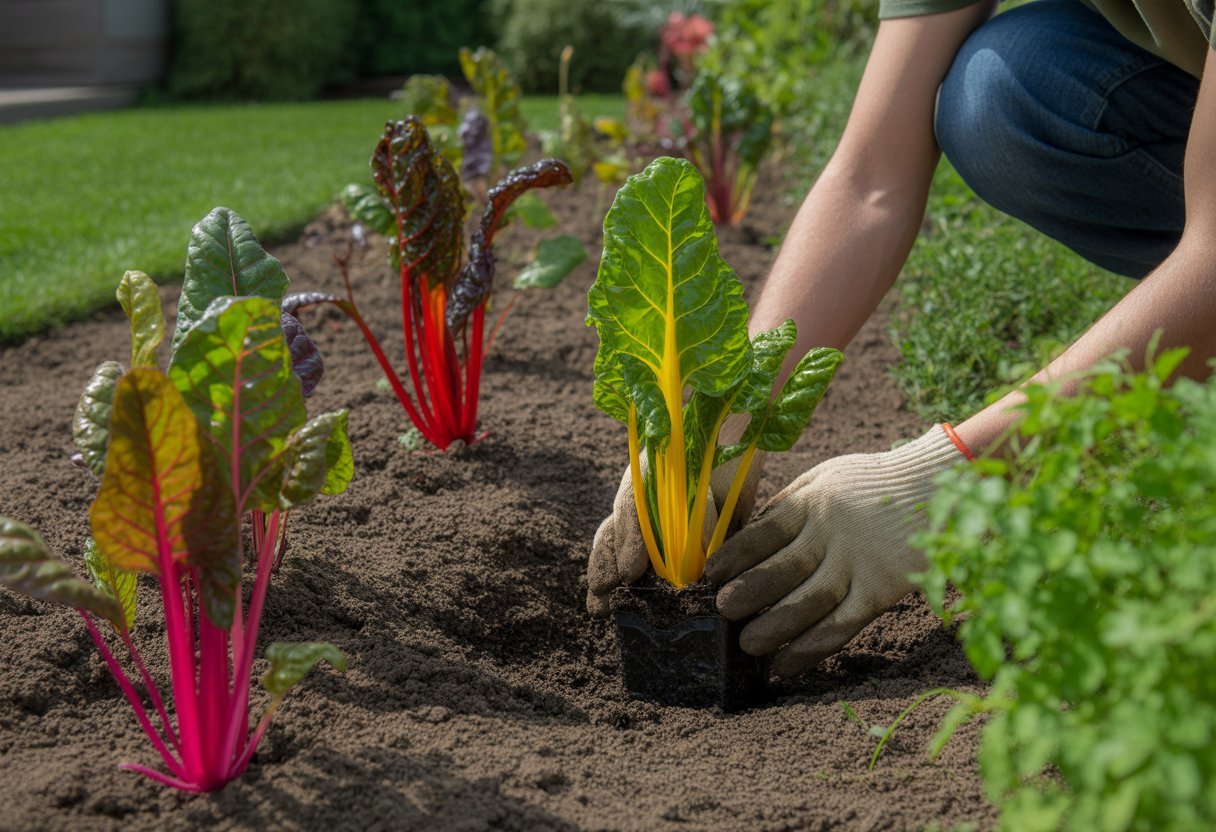
Ornamental chard really shines when you plant it in well-prepped soil and keep up with thinning and weed control. Succession plantings help keep the color going into fall, letting new growth pop up as older plants fade.
Soil Preparation and Planting Techniques
Start with soil that’s rich in organic matter—work in compost about 6 inches deep before planting. Chard likes well-drained, loamy soil with a pH between 6.0 and 7.0.
Space seeds or seedlings 8 to 12 inches apart. Plant them in rows for good air flow and easy access.
Keep rows 18 to 24 inches apart to avoid crowding. Sow seeds about half an inch deep, then water gently to kickstart germination.
Managing Growth: Thinning and Weed Control
Once seedlings have two true leaves, thin them out. Keep the strongest plants, spaced 8 to 12 inches apart, so they aren’t fighting for space or nutrients.
Weeds can be a pain around young chard. Mulch helps keep them down and holds moisture.
Hand-weeding works best to avoid messing with the roots. A weed-free patch keeps chard healthy and pests away.
Succession Plantings and Fall Crops
If you plant new chard every 3 to 4 weeks, you’ll have color all season. As older plants start to fade, fresh ones fill in.
You can plant ornamental chard in late summer for a fall show. Cooler temps actually make the leaf colors more intense.
Add mulch and protect those fall crops from early frost to get the most out of them.
Harvesting and Maintaining Ornamental Chard
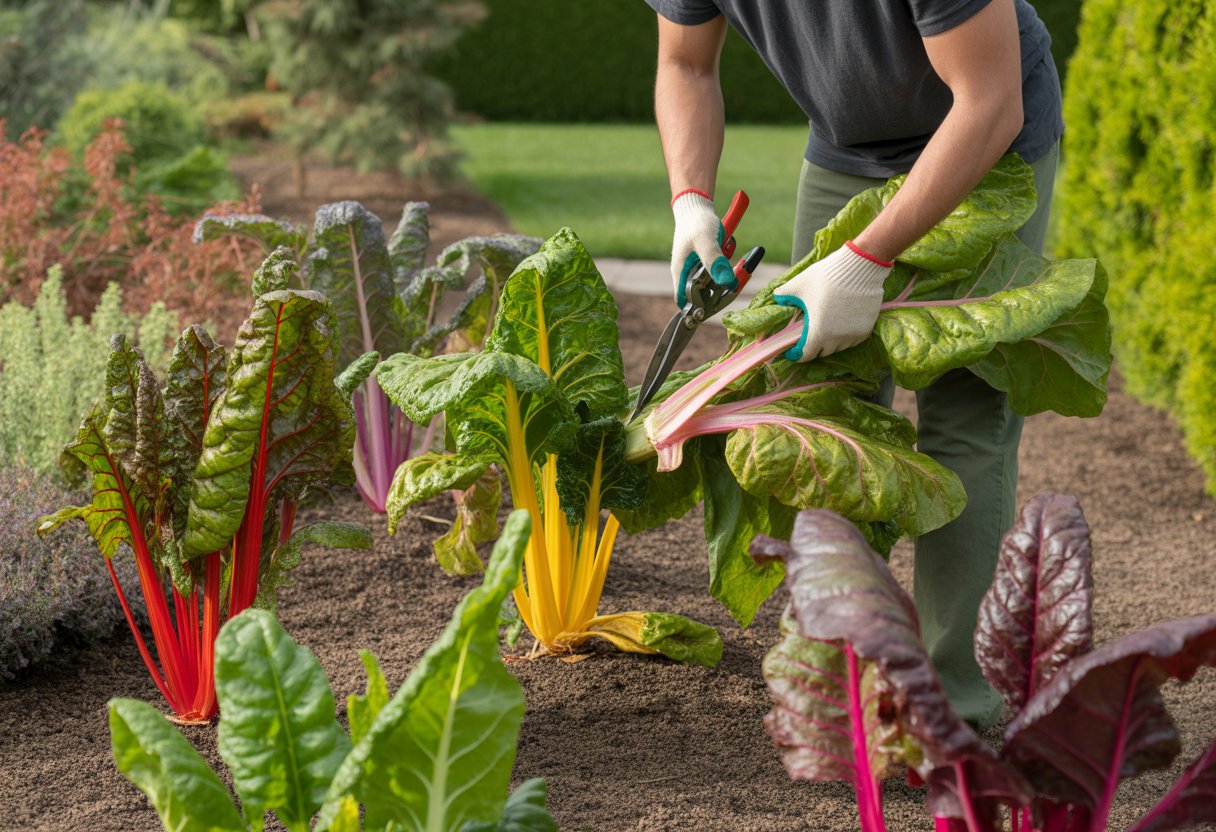
Ornamental chard needs a bit of attention to keep its colors bright and foliage healthy. Smart harvesting and regular maintenance go a long way in keeping the plant looking its best.
Harvesting and Pruning
Pick ornamental chard leaves when they’re young and tender—about 6 to 8 inches long. This encourages new growth and keeps the plant looking full.
Cut leaves from the outer edges using clean, sharp scissors or pruners so you don’t damage the center.
Pull off any yellowing or damaged leaves right away to keep plant health on track.
If stems start to flower, prune them back to push more energy into leaf growth. Don’t overdo it—never take more than a third of the leaves at once, or you might stress the plant.
Year-Round Maintenance
Ornamental chard likes consistent watering, but it really needs well-drained soil to keep those roots healthy. Keep the soil evenly moist, especially when the weather heats up, but don’t let it get soggy.
Fertilize once a month with a balanced, water-soluble fertilizer. This helps the leaves stay vibrant and lush.
If you live somewhere cold, try mulching around the base to help protect the roots and maybe squeeze a little more time out of the season. Watch out for pests like aphids or leaf miners—catching them early with a bit of insecticidal soap usually does the trick.
Stick with a regular routine, and you’ll see that the plant keeps its structure and those wild colors all year.

